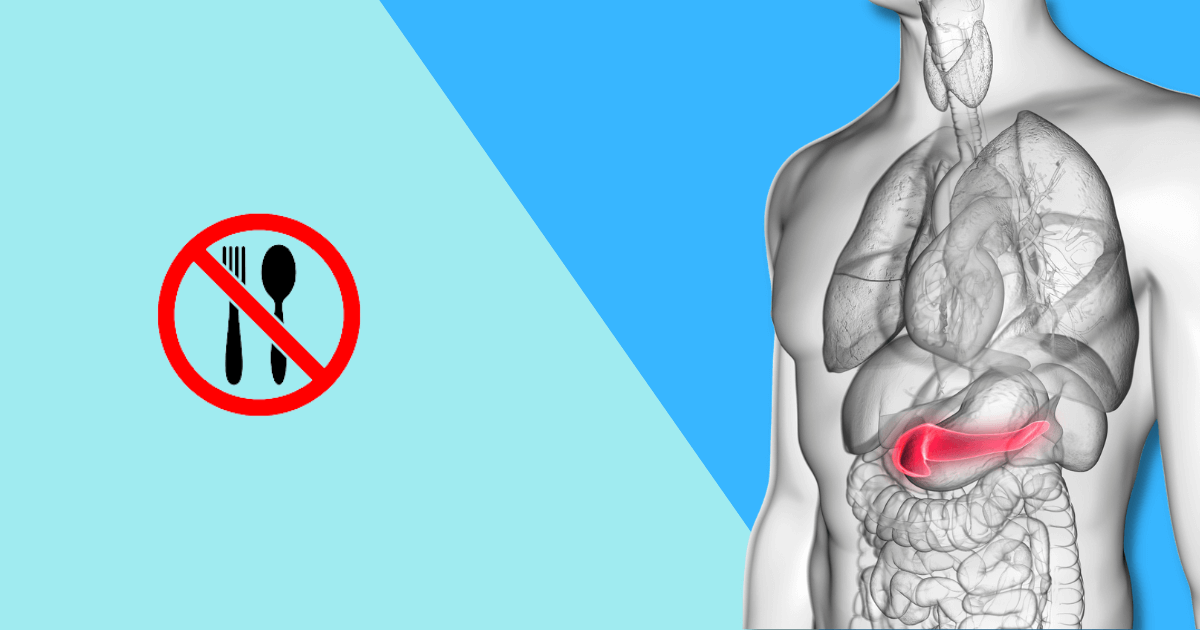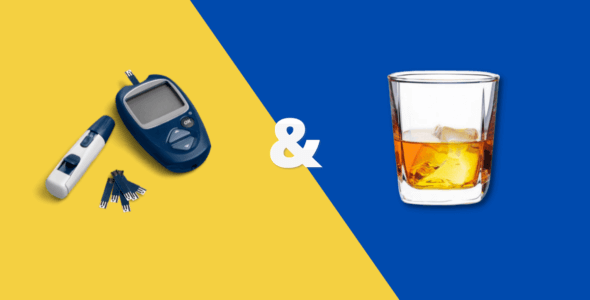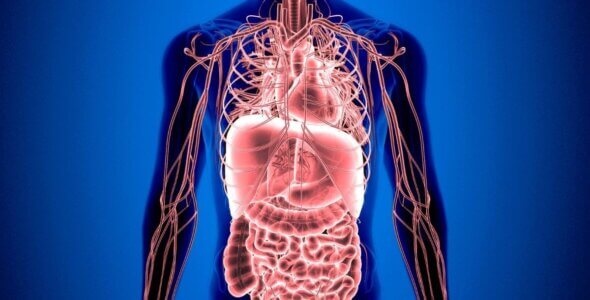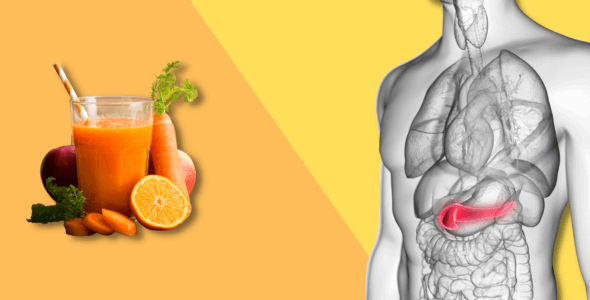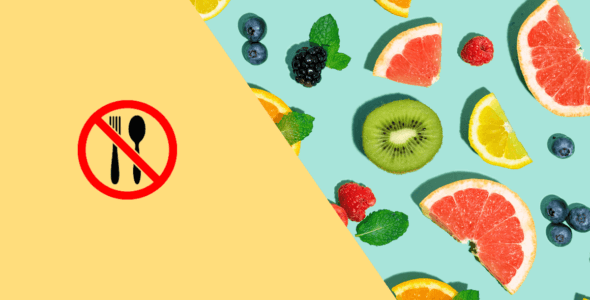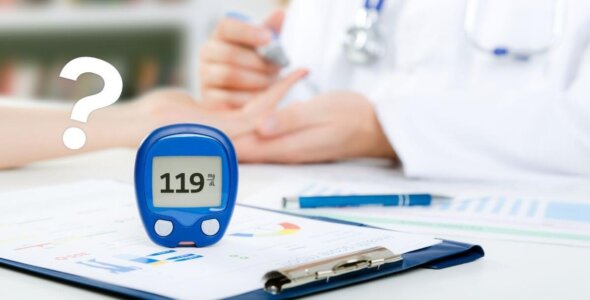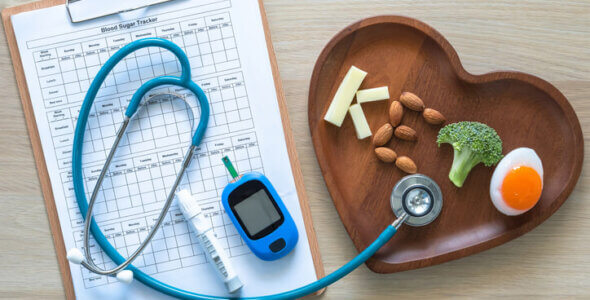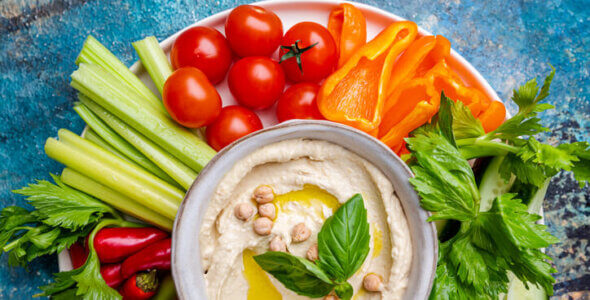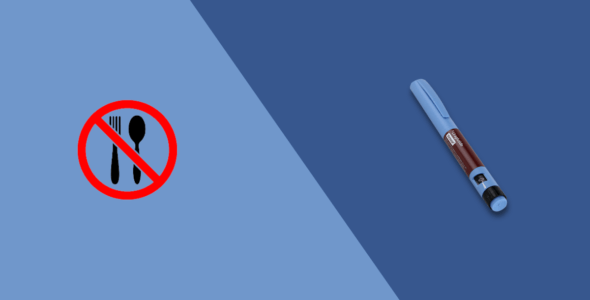What foods to avoid with diabetes
Table of contents
Eating the right foods and avoiding the wrong foods in conjunction with physical activity can help you manage your blood sugar levels and reduce your risk of diabetic complications. Eating certain unhealthy foods can raise your insulin levels and blood sugar which could possibly cause inflammation and may increase your risk of disease.
Currently, around 11% of individuals in the United States have type 1 diabetes or type 2 diabetes, Around 35% of the adult population in the country have prediabetes and around 90% of adults with diabetes also are overweight or have obesity, as reported in the 2020–2025 Dietary Guidelines for Americans.
You should follow a diabetes diet meal plan that includes a mix of protein, carbohydrates, and healthy fats, and smaller portions of certain foods including refined carbohydrates and sugars. Eating healthy foods and a low-calorie diet can potentially help put type 2 diabetes into remission.
Understanding food and diabetes
Diabetes affects how your body deals with food, but what you eat can also affect your diabetes. Your diet also influences your risk of diabetes complications.
Eating to avoid high blood sugar
If you have diabetes, your cells do not absorb glucose as fast as they should, meaning glucose can build up to harmful levels in your blood. You need to eat sources of sugar and carbohydrates that are digested slowly and release sugar gradually so that they do not cause a spike in blood sugar, such as:
- Fruit, vegetables, pulses, and legumes contain fiber alongside sugar and carbohydrates. This slows how quickly the sugar and carbs are digested.
- Complex carbohydrates (wholewheat pasta and brown rice) are broken down slowly compared to refined carbohydrates (white bread, white pasta, and white rice) which can cause spikes in blood sugar.
Eating to avoid insulin resistance
Insulin resistance is when your insulin stops working as well as it should. It can be a problem for people with either Type 1 or Type 2 diabetes and is linked to high cholesterol levels and high blood pressure, as well as being overweight or obese. Eating foods low in saturated fat and salt can help you avoid insulin resistance.
Eating to reduce the risk of diabetes complications
Diabetes puts you at risk of developing further health complications, including serious ones like heart attacks and strokes. You can reduce your risk of these complications by cutting how much salt, sugar, and saturated fat you eat.
Foods to avoid with diabetes
If you have diabetes, you should avoid foods that are high in:
Sugar
If you have diabetes, eating too much sugar could lead to kidney damage. The kidneys are essential for filtering your blood. Once blood sugar levels reach a certain amount, the kidneys could potentially start to release the excess sugar into your urine.
Refined carbohydrates
Refined carbohydrates may contain starch, sugar, and fiber. Starches and sugars are considered high risk for people with diabetes because the body breaks these foods into glucose which is not desirable for diabetics.
Saturated fat
Foods that are high in saturated fats, including fried foods such as french fries, coconut oil and palm oil, are not healthy foods for diabetics to eat as they contain bad fat which increases the risk of heart disease.
Salt
Although salt does not affect blood glucose levels, it is recommended to limit the amount of salt you eat as part of your diabetes management plan because eating too much salt may raise your blood pressure.
17 types of foods and drinks for diabetics to avoid
Here you will find our top 15 foods and drinks for diabetics to cut from their diets:
White bread
You can eat bread if you have diabetes, just make sure it is not white bread. The flower in white bread has been refined to remove fiber, oils, and protein, leaving behind mostly carbohydrates. This reduces the nutritional content of white bread, but more importantly, it means your body digests the carbohydrates faster, causing spikes in blood sugar and insulin.
Diet soda
Drinking soda is an effective way to dump a huge amount of sugar straight into your bloodstream. Soda is digested fast and can contain a scary amount of sugar. One can of soda has around nine teaspoons of sugar in it. But is diet soda a diabetic-friendly alternative?
Unfortunately, diet soda is not a safe alternative for diabetes. The sweeteners in diet soda may not contain any calories, but research has shown they still cause your body to release insulin, making it difficult to manage your blood sugar, and increasing your risk of weight gain and insulin resistance.
Fruit smoothies
Despite what you might have read, you can eat fresh fruit if you have diabetes. Although fruit contains sugar, the fiber in fruit slows down how quickly it is digested and released into your blood. However, you should be careful to eat fruit in moderation, and not eat too much in one go to reduce your overall sugar intake.
Fruit smoothies are a drink to avoid. Much of the fiber in the fruits have been removed and smoothies can pack a lot of fruit into one drink. This means your body receives a huge dose of sugar without the fiber needed to slow how quickly it is released into your blood.
Fruit juices
Drinking fruit juice might sound like a convenient way to make sure you get your five-a-day, but fruit juice causes the same problems as fruit smoothies. Most of the fiber from the fruit is removed and a lot of fruit sugar is compressed into each drink. This means you digest fruit juice fast and your bloodstream receives a quick hit of a large amount of sugar.
Sports drinks
Sports drinks, like Gatorade, Perform and Powerade, are intended to rapidly release sugar and salts into your blood. This is beneficial if you are a high-level athlete who is training hard, but the exact opposite of what you need if you have diabetes.
Sports drinks are high in sugar, a source of extra calories, and for most people totally unnecessary. You only need to drink water to keep yourself hydrated.
Gluten-free foods
Gluten is a healthy source of protein for most people to eat. You only need to avoid gluten if you are gluten intolerant or have celiac disease.
Gluten is a tacky protein too – it helps to give foods bounce and elasticity. When you press a loaf of bread and it bounces back into shape, that is gluten. Gluten-free foods replace this gluten with other tacky substances which are often less healthy – this includes certain fats or carbohydrates. This means gluten-free foods are often higher in carbs and fats and lower in protein than gluten-containing foods.
Processed lunch meat
Slices of lunch meat or deli meat contain high levels of salt – just a couple of slices can pack over half your daily requirement of sodium. Too much salt in your diet increases your risk of high blood pressure and heart disease, so you need to avoid these meats. If you want meat in your sandwiches, opt for unsalted, lean meat like chicken or turkey, or choose fish instead.
Flavored yogurt
Flavored yogurt and yogurts with fruit are often advertised as healthy, low-fat treats. And while it is true that these yogurts may be low in fat, they are not healthy treats as they are usually laden with sugar. One small yogurt can contain six teaspoons of sugar or even more.
Flavored instant oatmeal
Home-made oatmeal is a good choice for diabetics as oats are a source of complex carbohydrates and contain fiber, so they release sugar slowly.
However, instant oatmeal (particularly flavored oatmeal) is a different story. The oats in instant oatmeal are usually pulverized or powdered, meaning they are digested faster and release sugar more quickly. Instant and flavored oatmeal often contains high levels of added sugar and/or salt too.
Mac n’ Cheese
Everyone loves mac n’ cheese, but diabetics should stay away from it. It is usually made with white pasta, full-fat milk, and cheese, and often has added white flour and salt. Pasta and flour are a source of carbohydrates, which will be quickly broken down in your digestive system to release a large amount of sugar quickly. The milk and cheese add saturated fat that can cause weight gain and contribute to insulin resistance, while the salt can increase your blood pressure.
Coffee-shop coffee
A steaming cup of joe with a little low-fat milk is a daily treat you do not need to feel guilty about. But the coffee you buy from coffee shops is usually laden with carb and sugar-rich milk. Any added cream or sugar can boost the fat and sugar content considerably. Stick to homemade coffee and avoid the temptation of coffee shops.
Fast food
We all know fast food is bad for us. Whether it is burgers and fries, pizza, fried chicken, or Chinese takeout, fast food is laden with sugar, saturated fat, and salt. Eating fast food can raise your blood sugar, blood fats, and blood pressure, as well as expand your waistline.
But an occasional treat is OK, right? That depends on how occasional. Research has shown people who eat fast food twice a week can have a level of insulin resistance twice as bad as people who stay away from fast food. If you do eat fast food as an occasional treat, make sure it really is occasional.
Honey
You can find a lot of unscientific claims about honey online, including the idea that honey is not as bad for you as other sugars because it is natural. Sadly, this is not the case. Most sugars are natural, and honey is almost pure fructose. Think of honey as liquid sugar and a food that diabetics should definitely steer clear of. The same goes for agave nectar and syrup.
Jams and jellies
These might seem like healthy choices packed with fruit, but jams and jellies contain heaps of sugar, both from the fruit and from the considerable amount that gets added when the jams and jellies are made.
High sugar cereals
Cereals with lots of sugar and little whole grains should be avoided. Stick to healthy cereals such as shredded whole wheat cereal with low-fat milk that doesn’t contain any added sugar or salt and is also high in fiber.
Alcohol
You need to drink alcohol carefully if you have diabetes. Alcohol is high in calories, simple carbohydrates, and sugar, so you need to drink in moderation and drink slowly to avoid blood sugar spikes. Drinking alcohol after you have taken insulin can also increase your risk of hypoglycemia (falls in blood sugar to low levels) as well.
Full-fat dairy products
You should do your best to avoid full-fat dairy products that are made with whole milk, including cream, ice cream, full-fat yogurt, cream cheese, and other types of full-fat cheeses. Consider healthier alternatives such as fat-free or reduced-fat dairy products instead.
Tips for healthy eating with diabetes
The following healthy eating tips can help you manage your blood glucose levels, keep your blood pressure and bad blood fats down, raise your good cholesterol, and help you lose excess weight.
Switch to healthier carbohydrates
Swap refined carbohydrates like white rice, white pasta, and white bread for brown rice, wholewheat pasta, quinoa, and wholegrain bread alternatives to make sure the carbohydrates you eat release sugar slowly.
Cut out sugary drinks
Cutting out sugary food from your diet entirely is difficult, but you should aim to reduce how much sugar you consume. One simple and effective way to do this is to cut out all sugary drinks, like soda, tea, and coffee with added sugar and syrups, energy drinks, and fruit juice.
Replace them with water, black coffee, or coffee with a small amount of low-fat milk, and herbal and fruit teas that do not have added sugar.
Choose healthier fats
Your body needs a certain amount of fat to be healthy, but not all fats are equal. Saturated fats, found in food like red meat, processed meat, and high-fat dairy products, can damage your health and worsen your diabetes. This is the same for trans fats, found in fast food, cakes, and baked goods.
Unsaturated fats, eaten in the right amounts are healthier and can help you manage your diabetes. Good sources of unsaturated fats are oily fish, olive oil, avocados, nuts, and seeds.
Eat good sources of protein
Your body needs protein to maintain itself. Foods high in protein can also be filling and can help cut hunger pangs. Stick to healthy sources of protein like beans, lentils, green vegetables, nuts, fish and shellfish, and lean meats like turkey and chicken. Avoid red meat, processed meat, and high-fat/high-sugar dairy.
Add plenty of fruit and vegetables to your diet
Fruit and vegetables are packed with vitamins and minerals. Eating plenty in your diet is associated with a lower weight, lower blood pressure, better cholesterol, and less chance of insulin resistance. It can also help to reduce your risk of diabetic complications. Try to include vegetables with every meal and eat fresh fruit if you are tempted to snack.
Snack sensibly
Speaking of snacks, you can snack if you have diabetes. But make sure you do not overeat and avoid snacks high in salt, sugar, or fat. Opt for snacks like fresh fruit, nuts, low-fat and low-sugar dairy, and hard-boiled eggs. Read more about the best snacks for diabetics.
Stay hydrated
Being dehydrated can put a strain on your body and can make you feel hungry, causing you to eat more. Dehydration can also increase the concentration of sugar in your blood. Make sure you drink plenty of water throughout the day.
Diabetes food FAQs
What foods are good for diabetics?
The best foods for diabetics are nutritious while being low in sugar, low in refined carbohydrates, low in saturated fat, and low in salt. Makes sure your diet is based on plenty of fruit and vegetables, pulses and whole grains, beans, nuts, lean meat, and low-fat dairy.
The American Diabetes Association provides some of the best options:
- Plant-based proteins such as tofu, seeds, nuts and beans
- Chicken and other poultry
- Fish and seafood containing omega-3 fatty acids, such as salmon, mackerel and tuna
- Eggs and low-fat dairy
If you eat meat, try to always choose meat that is low in fat (eg. chicken breast) and trim the skin off of poultry.
Foods that contain high-quality carbohydrates and fiber such as nuts, legumes, beans, peas, and lentils may slow the absorption of glucose and help with weight loss which is favorable for diabetics.
The same report suggests that eating beans may help with weight loss and could help regulate blood pressure and cholesterol levels.
What fruits should diabetics avoid?
You can eat fresh fruit if you have diabetes, even watermelon, as the fiber it contains slows down how quickly the sugar is digested and released into your blood. Avoid fruit juice as most of the fiber has been removed. You should also avoid canned fruit in syrup or with added sugar.
Sugar can contribute to weight gain and increases the risk of heart disease and stroke.
Only eat small portions of dried fruit – as dried fruit is essentially shrunken fruit you can easily eat too much in one sitting.
Is watermelon bad for diabetics?
Fruit does contain sugar, but the fiber in fruit slows down how quickly the sugar is digested and released into your blood. The carbohydrates and sugars in watermelon are broken down more quickly than in other fruit. You will find many warnings online that watermelon can cause spikes in blood glucose.
The truth is that small amounts of watermelon will likely not cause unhealthy rises in blood glucose. But it is sensible to eat watermelon in small amounts until you know how your body reacts to it.
Are bananas bad for diabetics?
Bananas are richer in carbohydrates than most other fruit and this has led some people to advise diabetics not to eat them. But you can eat bananas if you have diabetes, as the carbohydrates are still digested relatively slowly. Just do not eat too many bananas at a time to make sure you do not overeat.
What vegetables are bad for diabetics?
Vegetables are a great source of nutrients and slow-release complex carbohydrates for diabetics. You should eat smaller portions of starchy vegetables like potatoes and corn, as they are rich in carbohydrates.
Eat more vegetables like leafy greens, broccoli, sprouts, peppers, asparagus, cauliflower, and eggplant. Avoid any vegetables with added fat, salt, or sugar.
Making the right lifestyle changes
Your diet can help you manage your diabetes and reduce your risk of complications. While it is of course important, it is only one part of living with diabetes. You can make other positive lifestyle changes which help, such as getting regular exercise.
People with diabetes can work with a registered dietitian or healthcare professional to develop a nutrition meal plan with optimal food choices that are right for them.
Uncontrolled diabetes could lead to serious consequences such as kidney disease, heart disease, blindness, and other complications.
As well, medications are also central to controlling and living with diabetes.
Read more about insulin and the top diabetes medications:
If your doctor has prescribed a diabetes medication to you, you may be able to receive your prescription for only $49 per month with NiceRx. Complete our online enrollment application to find out if you are eligible for prescription assistance.
Medically reviewed
A medical professional has reviewed this article.


Jamie Winn, PharmD
Jamie Winn, PharmD
Dr. Jamie Winn received his Doctor of Pharmacy in 2002 from the University of South Carolina College of Pharmacy, Columbia, SC. Jamie is a medical reviewer for NiceRx.

